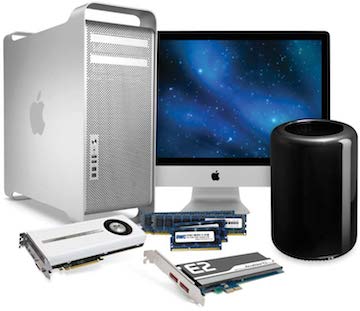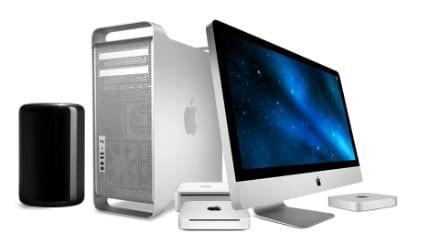 Apple has been breaking sales and profit records for years, rapidly becoming one of the most powerful companies on Earth. But that doesn’t stop a few analysts from claiming that Apple is “going down”. Be it because they sold fewer iPhones this quarter or some other short-term dip. I, however, am convinced doomsayers are wrong and it’s shameful how far some will go to get attention and clicks.
Apple has been breaking sales and profit records for years, rapidly becoming one of the most powerful companies on Earth. But that doesn’t stop a few analysts from claiming that Apple is “going down”. Be it because they sold fewer iPhones this quarter or some other short-term dip. I, however, am convinced doomsayers are wrong and it’s shameful how far some will go to get attention and clicks.
Apple’s best days are still ahead of it. Unfortunately, I can’t say I feel that confident when it comes to the Mac, and especially, Mac gaming.
Related: Commentary – Apple Should Renew Focus on Mac Users, Pros
On the one hand, the quantity and quality of Mac games continue to improve. Most of the best Windows PC games are available on Mac and indies increasingly support multiplatform games. But at the same time, the Mac itself is changing in ways that make gaming more difficult. The entire Mac line is moving to integrated graphics and Apple’s OpenGL support keeps getting worse each year.
We are at a crossroads. Can the great new games save Mac gaming or is Apple sentencing it?
Apple’s lack of interest in gaming
This is nothing new. Apple decided a long time ago that it wanted thin and portable machines with longer battery life. This is great when you need to haul your MacBook everywhere you go, but it’s actually bad when you want to play games.
Why? Because thinner Macs with more autonomy require power sacrifices. And the first victims were graphic cards, the single most important component for gaming. Most Macs today offer only integrated graphics cards. They can certainly  do wonders to power consumption but are much weaker than dedicated graphics cards. That’s understandable for ultra portable machines such as the new MacBook, but Apple is going much farther than that.
do wonders to power consumption but are much weaker than dedicated graphics cards. That’s understandable for ultra portable machines such as the new MacBook, but Apple is going much farther than that.
Today’s iMacs have either integrated graphics or mobile versions of dedicated graphics cards. Why use a card designed for laptops in a top of the line iMac when you could use a more powerful (and cheaper) standard graphics card instead? Because Apple wants iMacs to be ultra thin too.
Opting for autonomy is a reasonable decision. I get it, but I fear these decisions are weakening an already struggling gaming platform.
However, what Apple is doing with OpenGL worries me much more. OpenGL is the engine that handles graphics and is key when it comes to running games. Windows has DirectX and Apple has OpenGL. But instead of doing their best to support it, Apple is always several versions behind.
This means games could run better but don’t, because they can’t benefit from the latest OpenGL advancements. Sometimes games are dropped altogether because key features are missing on Apple’s OpenGL implementation.
Yes, Apple promised to bring Metal to the MacOS and revolutionize graphics. So far, almost no games or apps support it. Let’s hope Metal will take off soon before it’s too late. I know this all sounds pessimistic, but luckily developers are picking up the slack.

Still, great new games keep coming
Mac gaming has never been better and that’s thanks to the growing library of great games it supports.
A few years ago, the better-known Mac games you could find were Spore and Age of Empires. The vast majority of games were exclusive to Windows-PC and consoles.
Today, most of the best games are also available on Mac. For instance, seven out of the 10 most played games on Steam are available on Mac.
You can always find big exceptions, such as Grand Theft Auto 5 or Fallout 4, but the quantity of top rated Mac games is impressive. There’s XCOM 2, Firewatch, Shadow of Mordor, Cities: Skylines, Stardew Valley and more.
Some could argue that the Mac’s real problem wasn’t the games but the poor release dates. In some cases, Mac versions would come years after the Windows version (like the original Company of Heroes). It can still happen, but now games can get a Mac version just a few months later, and sometimes, on the same day as Windows-PC. This was unimaginable in the early 2000s.
The trend is positive and each year more good Mac games get released. This list with the best Mac games for 2016 is the perfect example.
Plus, when looking at the games planned for the future, things will continue to improve.
So what does the future hold?
It’s a question no one can answer. That said, I can tell you that I do feel optimistic. Apple is certainly a key player here and the fact it doesn’t care much about Mac gaming is worrying.
But that has always been the case. Apple has never cared, yet Mac gaming continues to grow each year. Luckily, multiplatform development and the top porting companies are here to stay. There’s no reason Mac gaming shouldn’t continue to grow.
And if Apple’s Metal API finally picks up… That would be very exciting to see.
• Ric Molina is a Rocket Yard contributor and runs Mac Gamer HQ, a site he created when he realized that great games did exist on the Mac but were just really hard to find. For more Mac gaming news, reviews and videos, check out Mac Gamer HQ.
Related articles










Think beyond the playing of games, to game development/programming and the related creative arts (3D modeling, texturing, music composition, etc.).
The Unity game engine (which I am using) nicely supports Windows, Mac, Linux for runtime, and also for design (Linux is still experimental but gaining support).
Right now, I am using Mac, but I am contemplating moving away from the platform when I upgrade hardware later this year, because of Apple’s lackluster video hardware and version-lagging OpenGL. I have a game-design *tool* (an add-on to Unity) that currently can’t run on Mac because it needs compute shader support. Windows and Linux can do that, but not Mac except (“soon”, we’re told) in Metal.
I wouldn’t mind Apple going with Metal if they *also* updated their OpenGL alongside it. Not everyone will immediately move to their proprietary standard from day one.
Like the author, I “get” why Apple wants to make machines thinner and lighter, with longer battery life. But they need to remember that the market is not all one big segment of consumers and business productivity users. Technical and creative professionals need a different breed of machine. If Apple insists on forcing developers and artists to work without mobile options, we will abandon their platform in droves, and all those “mainstream” users will soon have a shrinking marketplace of products.
nVidia GPU via Thunderbolt 3 in brand new Macs by October 2016.
Sure hope so. I hear the new Macs have been ready for months (engineering wise) but for some reason Apple doesn’t want to release them. Even making staff angry. Strange story, wonder if it could be true.